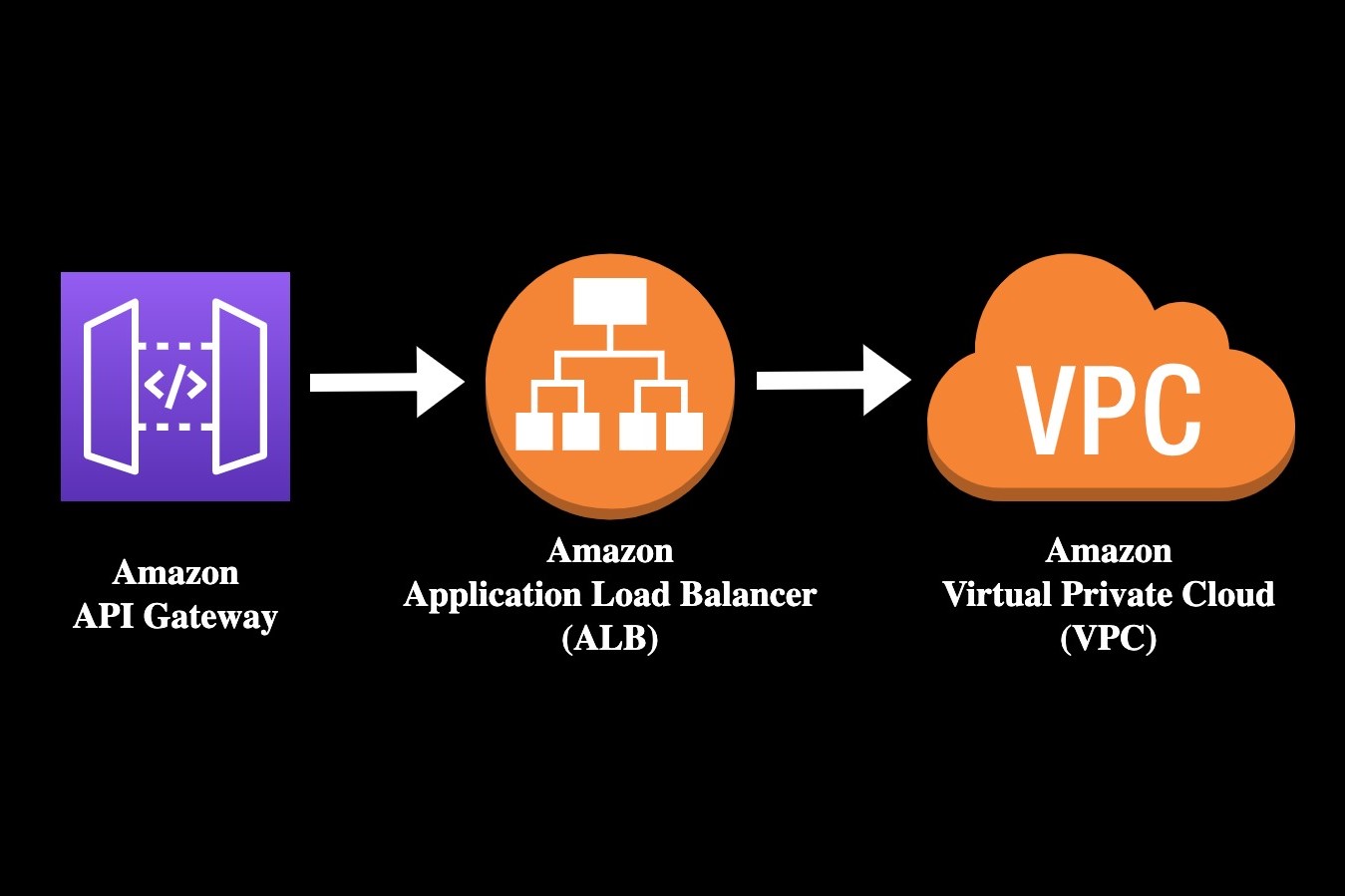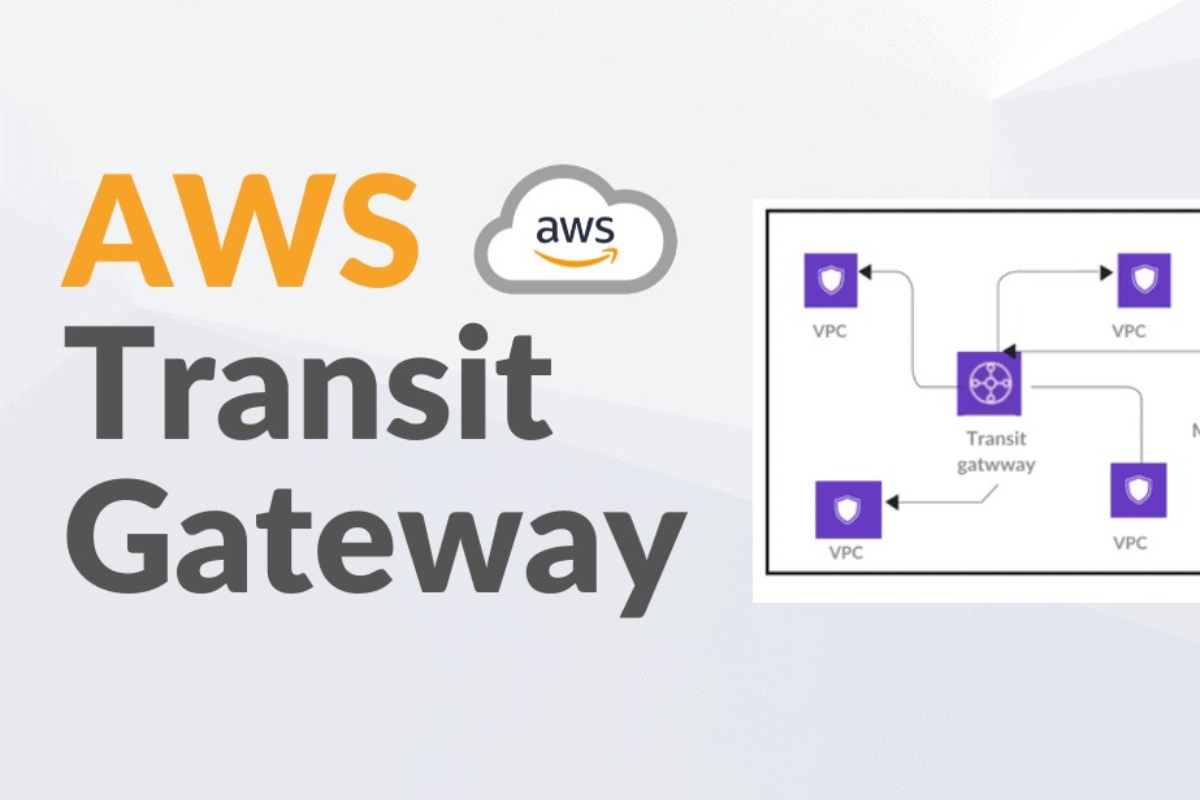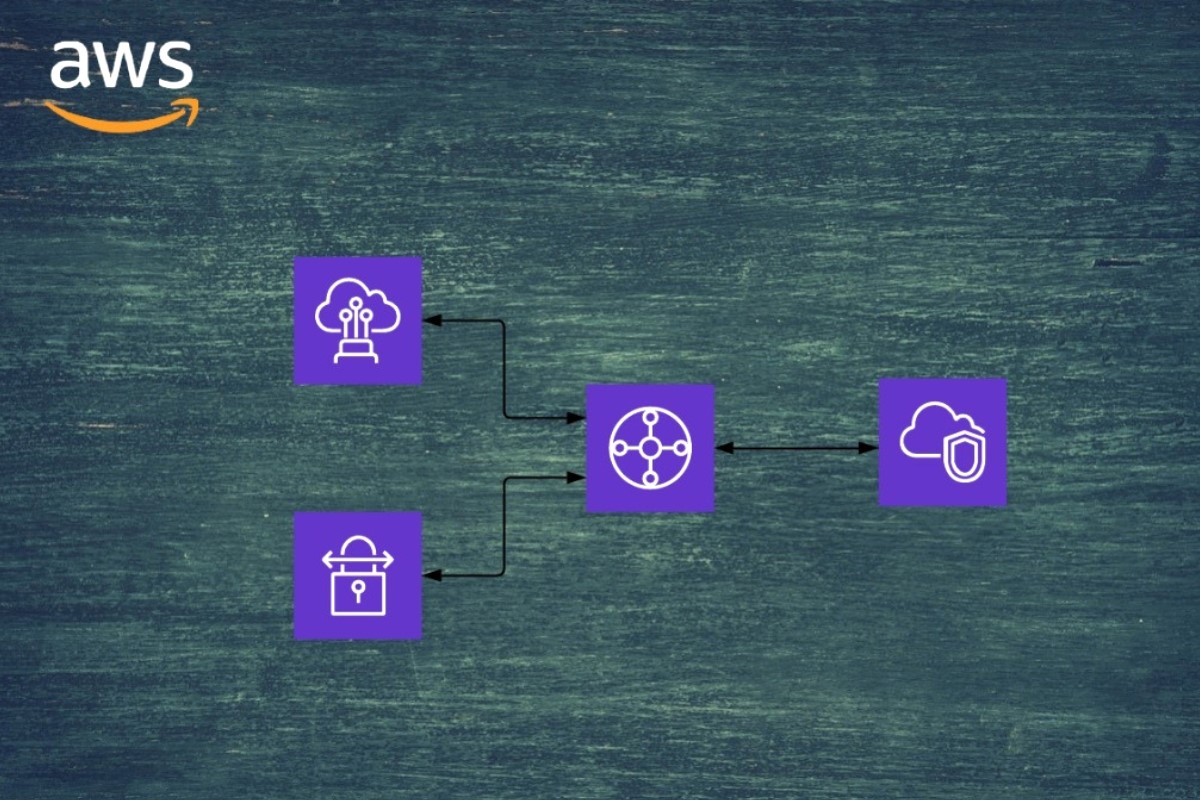Home>Technology and Computers>Amazon API Gateway Types Use Cases And Performance


Technology and Computers
Amazon API Gateway Types Use Cases And Performance
Published: January 23, 2024
Discover the various types, use cases, and performance of Amazon API Gateway in the realm of technology and computers. Explore its capabilities and benefits for your business.
(Many of the links in this article redirect to a specific reviewed product. Your purchase of these products through affiliate links helps to generate commission for Noodls.com, at no extra cost. Learn more)
Table of Contents
Introduction
Amazon API Gateway is a powerful and versatile service offered by Amazon Web Services (AWS) that enables developers to create, publish, maintain, monitor, and secure Application Programming Interfaces (APIs) at any scale. This fully managed service simplifies the process of building, deploying, and managing APIs, allowing developers to focus on creating innovative applications without the hassle of infrastructure management.
With Amazon API Gateway, developers can seamlessly connect their applications to a wide range of backend services, including AWS Lambda, AWS Elastic Beanstalk, Amazon EC2, and more. This flexibility empowers developers to build robust and scalable APIs that can handle varying workloads and adapt to changing business requirements.
By leveraging Amazon API Gateway, developers can also enforce security measures such as authentication and authorization, ensuring that only authorized users and applications can access the APIs. Additionally, the service provides comprehensive monitoring and logging capabilities, enabling developers to gain valuable insights into API usage, performance, and potential issues.
In essence, Amazon API Gateway serves as a central hub for managing APIs, offering a plethora of features that streamline the development and maintenance of APIs while enhancing security and performance. Whether it’s creating new APIs, integrating with existing services, or implementing robust security measures, Amazon API Gateway provides a comprehensive solution for modern application development.
What is Amazon API Gateway?
Amazon API Gateway is a fully managed service provided by Amazon Web Services (AWS) that simplifies the process of creating, deploying, and managing APIs at any scale. It serves as a central platform for developers to build, publish, maintain, and secure APIs, allowing them to focus on innovating and creating robust applications without the complexities of infrastructure management.
At its core, Amazon API Gateway acts as a front door for applications to access data, business logic, or functionality from backend services. It facilitates seamless connectivity between client applications and a variety of backend services, including AWS Lambda, AWS Elastic Beanstalk, Amazon EC2, and more. This versatility enables developers to integrate their applications with a wide range of AWS services, empowering them to build scalable and resilient APIs that can adapt to evolving business needs.
One of the key advantages of Amazon API Gateway is its ability to handle varying workloads and traffic patterns. By providing a scalable and reliable infrastructure, the service ensures that APIs can accommodate fluctuations in usage without compromising performance or availability. This scalability is particularly valuable for applications that experience unpredictable spikes in traffic, as it allows developers to maintain a consistent user experience regardless of demand.
Furthermore, Amazon API Gateway offers robust security features to protect APIs and the data they expose. Developers can implement authentication and authorization mechanisms to control access to their APIs, ensuring that only authorized users and applications can interact with the services. This level of security is essential for safeguarding sensitive data and preventing unauthorized access, thereby instilling confidence in both developers and end users.
In addition to facilitating API creation and security, Amazon API Gateway provides comprehensive monitoring and logging capabilities. Developers can gain valuable insights into API usage, performance metrics, and potential issues, allowing them to proactively identify and address any operational concerns. This visibility into API activity is instrumental in optimizing performance, troubleshooting errors, and making informed decisions to enhance the overall user experience.
In summary, Amazon API Gateway serves as a foundational component for modern application development, offering a wealth of features that streamline API management, enhance security, and provide valuable insights into API usage and performance. By leveraging this fully managed service, developers can accelerate the creation of APIs, integrate with diverse backend services, and ensure the secure and efficient operation of their applications.
Types of Amazon API Gateway
Amazon API Gateway offers several types of APIs, each tailored to specific use cases and requirements. Understanding the distinct characteristics of these API types is essential for effectively leveraging the capabilities of Amazon API Gateway. The following are the primary types of APIs supported by Amazon API Gateway:
-
RESTful APIs:
- RESTful APIs adhere to the principles of Representational State Transfer (REST) architecture, providing a standardized approach for building web services. These APIs utilize HTTP methods such as GET, POST, PUT, DELETE to perform operations on resources, and they typically communicate using JSON or XML payloads. RESTful APIs are well-suited for creating scalable and interoperable web services, making them a popular choice for modern application development.
-
WebSocket APIs:
- WebSocket APIs enable real-time, bidirectional communication between client applications and backend services. Unlike traditional HTTP-based communication, WebSocket APIs facilitate persistent connections, allowing for seamless data exchange and event-driven interactions. This type of API is ideal for applications that require instant updates, live messaging, or collaborative features, as it supports continuous communication channels between clients and servers.
-
HTTP APIs:
- HTTP APIs are designed to offer low-latency and cost-effective solutions for building APIs with high performance and simplicity. They provide native support for core API features, including route management, request and response transformations, and payload validation. HTTP APIs are optimized for serverless workloads and microservices architectures, making them well-suited for modern, cloud-native applications that demand efficient and lightweight communication protocols.
Each type of API offered by Amazon API Gateway caters to specific use cases and development scenarios, empowering developers to choose the most suitable option based on their application requirements. Whether it’s building traditional RESTful services, implementing real-time communication with WebSocket APIs, or optimizing for low-latency HTTP-based interactions, Amazon API Gateway provides a diverse set of tools to address a wide range of API needs.
By understanding the nuances of each API type, developers can make informed decisions when designing and implementing APIs, ensuring that their applications benefit from the performance, scalability, and flexibility offered by Amazon API Gateway. This versatility enables developers to create innovative and resilient APIs that align with the unique demands of their applications and user experiences.
Use Cases of Amazon API Gateway
Amazon API Gateway offers a wide array of use cases, showcasing its versatility and applicability across diverse scenarios in modern application development. Understanding these use cases is crucial for harnessing the full potential of Amazon API Gateway. The following are prominent use cases that highlight the practical applications of this powerful service:
-
API Creation and Management: Amazon API Gateway serves as a comprehensive platform for creating, publishing, and managing APIs. It enables developers to design and deploy APIs that provide access to backend services, data, or business logic. By leveraging Amazon API Gateway, developers can streamline the process of building APIs, ensuring consistent performance, security, and scalability.
-
Serverless Application Development: For serverless architectures powered by AWS Lambda, Amazon API Gateway acts as a crucial component for exposing serverless functions as APIs. This use case enables developers to create serverless applications that can seamlessly interact with external systems and services through well-defined APIs, enhancing the agility and extensibility of serverless solutions.
-
Microservices Integration: In the context of microservices-based architectures, Amazon API Gateway facilitates the integration of individual microservices by providing a unified entry point for client applications. This use case allows developers to orchestrate and expose multiple microservices as a cohesive API, simplifying the consumption of microservices and promoting modular, scalable application designs.
-
Real-time Communication: With support for WebSocket APIs, Amazon API Gateway enables real-time, bidirectional communication between client applications and backend services. This use case is particularly valuable for applications that require live messaging, collaborative features, or real-time data updates, as it empowers developers to implement responsive and interactive user experiences.
-
API Security and Authorization: Amazon API Gateway offers robust capabilities for implementing authentication and authorization mechanisms, ensuring that APIs are accessed securely. This use case is essential for protecting sensitive data and controlling access to APIs, thereby bolstering the overall security posture of applications and services.
-
API Monitoring and Analytics: Amazon API Gateway provides comprehensive monitoring and logging features, allowing developers to gain insights into API usage, performance metrics, and potential issues. This use case enables proactive monitoring, troubleshooting, and optimization of APIs, empowering developers to deliver reliable and high-performing applications.
By embracing these use cases, developers can leverage Amazon API Gateway to address a wide range of application development challenges, from API creation and management to real-time communication and security enforcement. The service’s flexibility and robust feature set make it a valuable asset for modernizing applications, enhancing user experiences, and accelerating the delivery of innovative solutions.
Performance of Amazon API Gateway
Amazon API Gateway is designed to deliver high-performance and reliable API management capabilities, ensuring that applications can efficiently interact with backend services while maintaining optimal responsiveness and scalability. The performance of Amazon API Gateway is underpinned by several key factors that contribute to its effectiveness in handling varying workloads and traffic patterns.
Scalability and Elasticity
Amazon API Gateway offers inherent scalability and elasticity, allowing APIs to seamlessly accommodate fluctuations in usage and traffic. This scalability is essential for applications that experience unpredictable spikes in demand, as it ensures consistent performance and availability without the need for manual intervention. By automatically scaling resources in response to workload changes, Amazon API Gateway enables applications to maintain responsiveness and handle increased traffic without compromising user experience.
Low Latency Communication
The service is optimized to facilitate low-latency communication between client applications and backend services, ensuring that API requests and responses are processed with minimal delay. This capability is particularly valuable for applications that require real-time interactions or demand rapid data retrieval, as it enhances the overall responsiveness of the API endpoints. By minimizing latency, Amazon API Gateway contributes to a seamless and efficient user experience, especially in scenarios where timely data delivery is critical.
Caching and Content Delivery
Amazon API Gateway incorporates caching mechanisms that enable the temporary storage of API responses, reducing the need to repeatedly fetch data from backend services. By caching frequently accessed content at the edge locations of the AWS network, the service optimizes response times and conserves resources, resulting in improved performance for API consumers. Additionally, Amazon API Gateway leverages content delivery networks (CDNs) to efficiently distribute cached content, further enhancing the speed and reliability of API responses.
Integration with AWS Services
The seamless integration of Amazon API Gateway with various AWS services, such as AWS Lambda and Amazon S3, contributes to its performance capabilities. By leveraging these integrations, developers can build efficient and scalable APIs that harness the power of serverless computing, data storage, and other cloud resources. This tight integration enables applications to benefit from the performance optimizations and scalability offered by AWS services, enhancing the overall efficiency of API operations.
Optimized Network Infrastructure
Amazon API Gateway operates on a robust and optimized network infrastructure, ensuring that API requests are efficiently routed and processed. The service leverages AWS’s global network of edge locations and points of presence to minimize latency and maximize throughput, resulting in reliable and high-performance API interactions. This optimized network infrastructure enhances the overall responsiveness and reliability of API endpoints, contributing to a seamless user experience.
In summary, the performance of Amazon API Gateway is characterized by its scalability, low latency communication, caching capabilities, seamless integration with AWS services, and optimized network infrastructure. These attributes collectively contribute to the service’s ability to deliver high-performance API management, empowering developers to build resilient and efficient applications that can effectively meet the demands of modern digital experiences.













